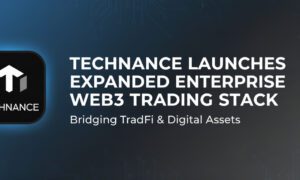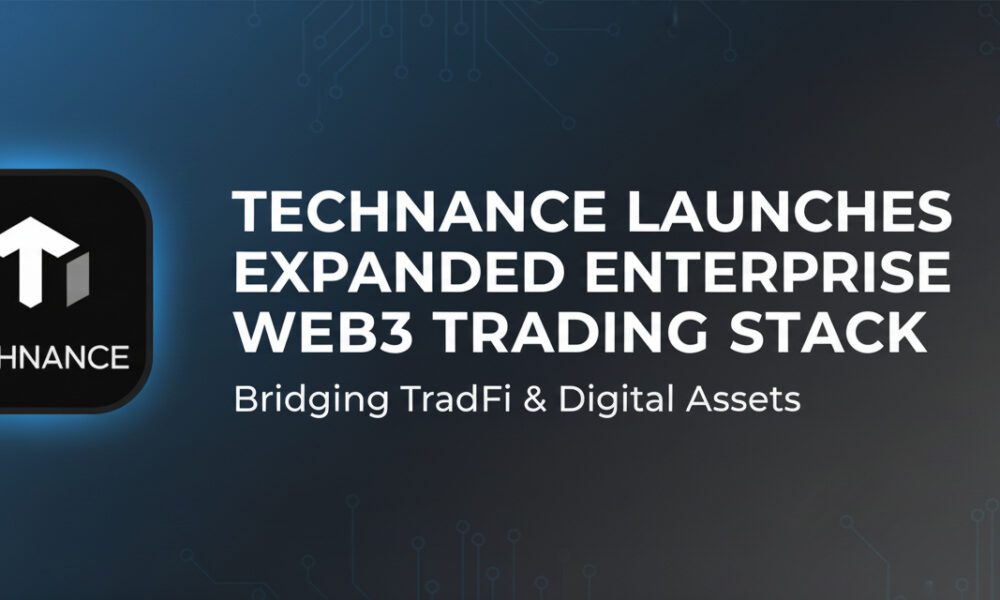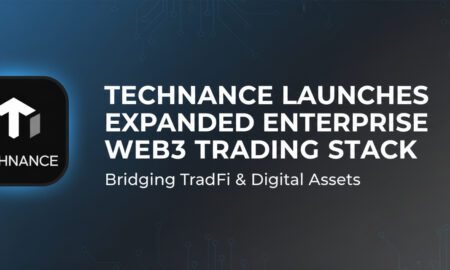Undoubtedly, the world of cryptocurrency is currently evolving at lightning speed. And 2025 is shaping up to be a game-changing year for blockchain innovation.
Let’s talk in terms of numbers now! By the end of the year, the worldwide cryptocurrency market is expected to reach $7.5 trillion, up from about $2.6 trillion in 2024, according to a recent analysis by Binance News. Isn’t that huge?
Considering that, whether you are just a newbie, an aspiring developer, or an entrepreneur with big ideas, now is the perfect time to get into the world of cryptocurrency development. But where do you start?
Don’t worry; here’s a crypto development guide that will help you understand the basics of building your own cryptocurrency in an easy way.
Let’s break it all down — step by step!
What is cryptocurrency development?
Cryptocurrency development is basically the process of building digital currencies that operate on decentralized blockchain networks. It includes everything from creating crypto coins or tokens, designing their blockchain protocols, writing smart contracts, and deploying dApps.
Well, the importance of cryptocurrencies can’t be overstated. These are not just speculative assets; they power a rapidly growing ecosystem of decentralized finance, non-fungible tokens, cross-border payments, and supply chain transparency tools. Cryptocurrencies are enabling faster transactions, greater financial inclusion, and new ways for individuals and businesses to interact with money.
Most of the individuals get confused between crypto coins and tokens. Do you also get confused? Let’s clear it up for you! A coin is a digital currency that operates on its own independent blockchain. For example, Bitcoin runs on the Bitcoin blockchain, and Ethereum runs on the Ethereum blockchain. Whereas a token is built on top of an existing blockchain. Tokens like USDT or Uniswap are created on platforms like Ethereum.
Why Learn Crypto Development in 2025?
In 2025, the landscape of cryptocurrency development is more promising than ever. Here are the reasons why you must get into learning crypto development:
Ever-Rising Demand for Blockchain Developers
As industries like finance, healthcare, gaming, and supply chain management adopt blockchain technology, the need for developers skilled in creating decentralized applications, smart contracts, and digital assets continues to grow. With this, learning cryptocurrency development presents an excellent opportunity for those looking to enter a rapidly expanding field.
Web3, DeFi, and NFTs Shaping the Future
At the same time, Web3, DeFi, and NFTs are actively shaping the future of this digital world. Web3 is transforming the space by giving users more control over their data and digital assets. DeFi is revolutionizing traditional finance by enabling peer-to-peer financial transactions. Meanwhile, NFTs have expanded beyond digital art and provide developers with endless opportunities to create innovative solutions.
Real-World Use Cases & Opportunities
You might be surprised to read that blockchain is being implemented for tokenized assets, which improves digital identity verification and enhances supply chain transparency. Additionally, many startups are creating dApps, tokenized loyalty programs, and other blockchain-based innovations. This makes now the perfect time to learn crypto development and contribute to this ecosystem.
Key Steps to Create a Cryptocurrency
Are you now facing the dilemma of how to create a cryptocurrency? Let’s take a look at the key steps involved in the process of creating cryptocurrencies:
Step 1: Define Your Objectives
The first and most important step in the whole process of cryptocurrency development is to determine why you want to create it. Are you launching a new project? Do you need a utility token for a dApp? Are you building a community-focused coin or trying to raise capital through an ICO/IDO? Understanding the goals behind it will help you scale the project easily and will also shape every decision moving forward.
Step 2: Choose a Consensus Algorithm
Decentralization is the core of cryptocurrencies. To maintain this decentralized nature, the cryptocurrencies depend on consensus mechanisms, such as PoW and PoS. Each of these algorithms plays an integral role in ensuring the security of crypto transactions. You need to make a choice between these two consensus mechanisms while developing cryptocurrency.
Step 3: Select the Right Blockchain Platform
If you are creating a token, choose a blockchain platform that aligns with your project goals. Some of the most popular options include Ethereum, Binance Smart Chain, Solana, and Polygon. Each offers different transaction speeds, costs, and developer tools. You need to make a choice between the blockchain platforms based on your specific goals.
Step 4: Develop & Audit Smart Contracts
If you are launching a token or dApp, you will need to write smart contracts — usually in Solidity or Rust. These handle critical logics like transfers, staking, or governance. You need to make sure to audit your contracts by hiring cryptocurrency development services to prevent any bugs or vulnerabilities.
Step 5: Create the Nodes
Basically, nodes are the computers that participate in the blockchain network. These run the software protocol, validate transactions, and contribute to keeping the network secure. But here’s a trick. You need to make some choices. Will the nodes be kept public or private? Will you place them on-site or in the cloud? How many nodes will you be creating? On which operating system will they run?
Step 6: Design the Internal Architecture
The next important step is to build the internal architecture. This plays an important role, as once you are online, there is no looking back. Apart from that, it is crucial that you make some decisions regarding the accessibility and economy of your currency, such as:
- Determine who can access and validate new blocks.
- Define how many coins you will offer.
- Estimate the block reward, block size, and transaction limits.
- Decide on the digital signatures that will be required to verify transactions.
Step 7: Generate a Wallet Address
Once you are at this step, your nodes are all set up. Next, you will need to have a wallet address such that users can easily interact with your network to buy or sell cryptocurrency. That’s your wallet address. Here, you have two choices: either generate it on your own or use a third party to generate that address for you.
Step 8: Integrate the APIs
Lastly, you need to integrate an API for your cryptocurrency. This will allow your users to build new tools and interact within your network. APIs are one of the best ways to build trust with a community of developers and tech enthusiasts.
Step 9: Comply with Legal Regulations
Cryptocurrency projects must follow regulations in their target jurisdictions. Neglecting this step can lead to major legal and financial issues later on. Thus, you need to check on legal regulations, such as:
- AML/KYC compliance
- Registering for fundraising methods like ICOs or IDOs
- Token classification.
Step 10: Deploy Your Coin or Token
Once everything is tested and audited, it’s time to deploy your cryptocurrency to the mainnet or relevant blockchain. This includes launching your smart contracts, publishing wallets, and making your code open source.
Cryptocurrency Development Platforms for 2025
The following are the top cryptocurrency development platforms that are expected to become more popular this year:
Ethereum
Ethereum is considered as the most popular platform for creating crypto coins and tokens. Basically, it was the first blockchain network that was initially used for smart contracts, and now it has made its way to create dApps and tokens.
Binance Smart Chain (BSC)
BSC is now becoming a competitor to Ethereum. Since it is already connected to the Binance crypto exchange, it is gaining a lot of attention from users, developers, and tech enthusiasts.
Polkadot
Polkadot sets itself apart with the functionality of enabling different blockchains to connect and work together. Its innovative design makes it possible for blockchain networks to collaborate and share information.
Solana
Solana is well-known as one of the fastest blockchain networks since it uses a unique way of verifying transactions, with its consensus called Proof of History. It lets the network handle thousands of transactions every second.
Cardano
The Cardano blockchain is known for its focus on being environmentally friendly. It provides a safe and scalable place for developers to build crypto tokens.
Beginner-Friendly Blockchain Programming Languages
When developing cryptocurrencies, blockchain platforms, or decentralized applications (dApps), developers need to understand different programming languages, such as:
Solidity
Solidity is the most common programming language that is used for writing smart contracts on the Ethereum blockchain. It is a high-level language that is designed to work with the Ethereum Virtual Machine (EVM).
Rust
Rust is a programming language that is known for its memory safety and performance. It is particularly used for projects that require high performance and scalability.
Python
Python is a high-level programming language that is used for developing cryptocurrencies. It is favored for its simplicity and ease of use, which makes it accessible for developers with varying levels of experience.
JavaScript (Web3.js / Ethers.js)
JavaScript plays an important role in the crypto space through Web3.js and Ethers.js. These libraries allow developers to interact with Ethereum smart contracts via web browsers.
Vyper
Vyper is an Ethereum-based smart contract language that is designed as an alternative to Solidity. It’s inspired by Python and focuses on security and simplicity.
Tools & Resources for Cryptocurrency Development
Building a cryptocurrency requires a set of tools for writing, testing, deploying, and managing it. Here are the best crypto development tools in 2025:
- Remix IDE
Remix IDE is an open-source web application used for writing, compiling, testing, and deploying smart contracts on the Ethereum blockchain.
- Truffle Suite
Truffle is one of the most popular frameworks for building Ethereum-based applications.
- Hardhat
Hardhat is a development environment to compile, deploy, test, and debug Ethereum-based applications.
- MetaMask
MetaMask is a browser extension and mobile app that acts as a digital wallet for managing Ethereum-based tokens and helps interaction with Ethereum dApps.
- Ganache
Ganache is part of the Truffle Suite, which allows developers to quickly deploy contracts, execute transactions, and simulate network conditions for testing.
- Alchemy
Alchemy is a blockchain development platform that provides infrastructure and tools for building on Ethereum and other blockchains.
- GitHub Repositories
GitHub is the go-to place to access open-source code for projects, libraries, smart contracts, and APIs.
- Online Courses & Tutorials
Many platforms offer courses to help developers get started with cryptocurrency and blockchain development.
Common Mistakes Beginners Should Avoid
Cryptocurrency and blockchain development are complex and require a deep understanding of both technical and non-technical aspects. Beginners often make some mistakes, such as:
- Skipping Security Best Practices
Many beginners ignore the importance of security in crypto development. Skipping security best practices can leave your project vulnerable to hacks, vulnerabilities, and exploits. It is important to ensure that best practices are followed for smart contract security, which includes code audits and bug testing.
- Poor Tokenomics
Many beginners fail to properly design tokenomics, which leads to poorly thought-out systems. A poorly designed tokenomics model can lead to the failure of your cryptocurrency project. Thus, it is important to plan your tokenomics model carefully, considering the total supply, distribution mechanism, and utility of the token.
- Not Testing Thoroughly
Skipping testing is a common mistake among beginners. Many developers rush to launch their cryptocurrencies or smart contracts without properly testing them on testnets or running security audits. This can lead to unexpected bugs and expensive vulnerabilities. Before deployment, perform unit testing, integration testing, and performance testing to ensure functionality.
- Ignoring Legal Compliance
Legal compliance is one of the most overlooked aspects of cryptocurrency development. Many crypto projects fail to comply with local and international regulations, such as those related to AML, KYC, securities laws, and tax reporting. If you lack experience, consider hiring cryptocurrency development services that can help you navigate crypto regulation and compliance.
Future of Cryptocurrency Development
The future of crypto development is being shaped by the latest technological advancements in the industry. Have a look at the below-mentioned crypto trends 2025!
- One of the most promising trends in the crypto space is the integration of AI with blockchain. It enables more autonomous execution of smart contracts, which improves fraud detection.
- At the same time, Layer 2 scalability solutions like Optimistic Rollups and zk-Rollups are solving critical issues related to transaction speed and high gas fees.
- Meanwhile, the regulatory environment is becoming more defined, with governments pushing for clarity on compliance, taxation, and security classifications.
Together, these innovations are advancing the crypto ecosystem and making it a promising space for developers in 2025 and beyond.
It’s a Wrap
So, that’s it for this blog!
Developing cryptocurrency can be both a rewarding and tedious process. That’s because it requires lots of technical knowledge and experience to create cryptocurrencies as planned.
We hope by following our guide for cryptocurrency for beginners, you can easily develop crypto tokens and coins.
On the other hand, if you are looking for reliable and trustworthy assistance to help you navigate the process, look no further than Technoloader!
Known as the best cryptocurrency development company, we offer top-notch solutions from designing and developing to deploying and maintaining the cryptocurrency. Our expert team of developers can help you create cryptocurrencies that survive in this flooded and saturated crypto market.



































